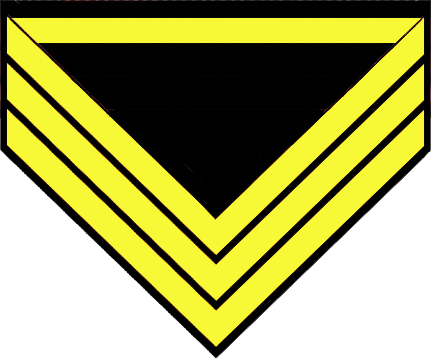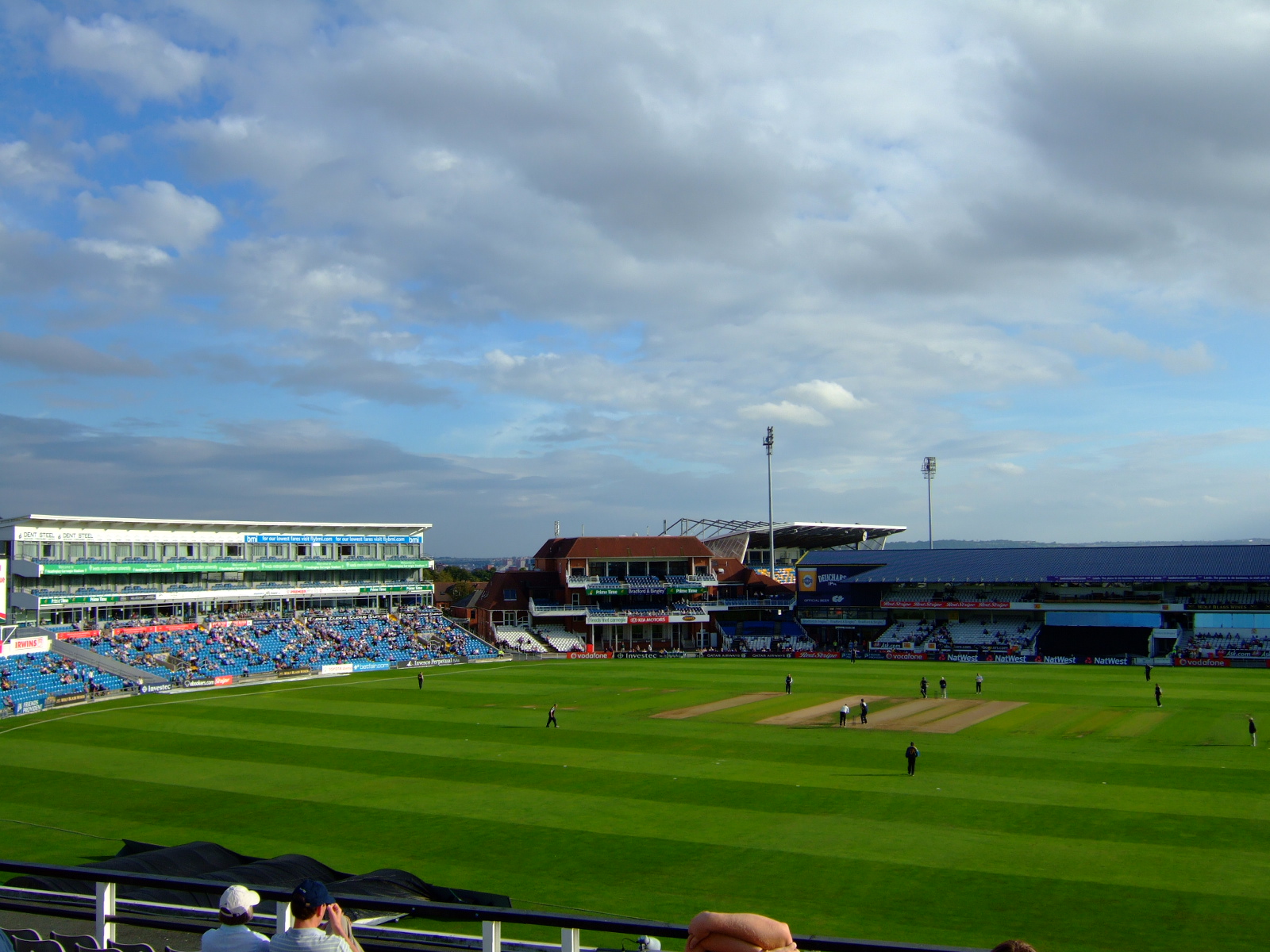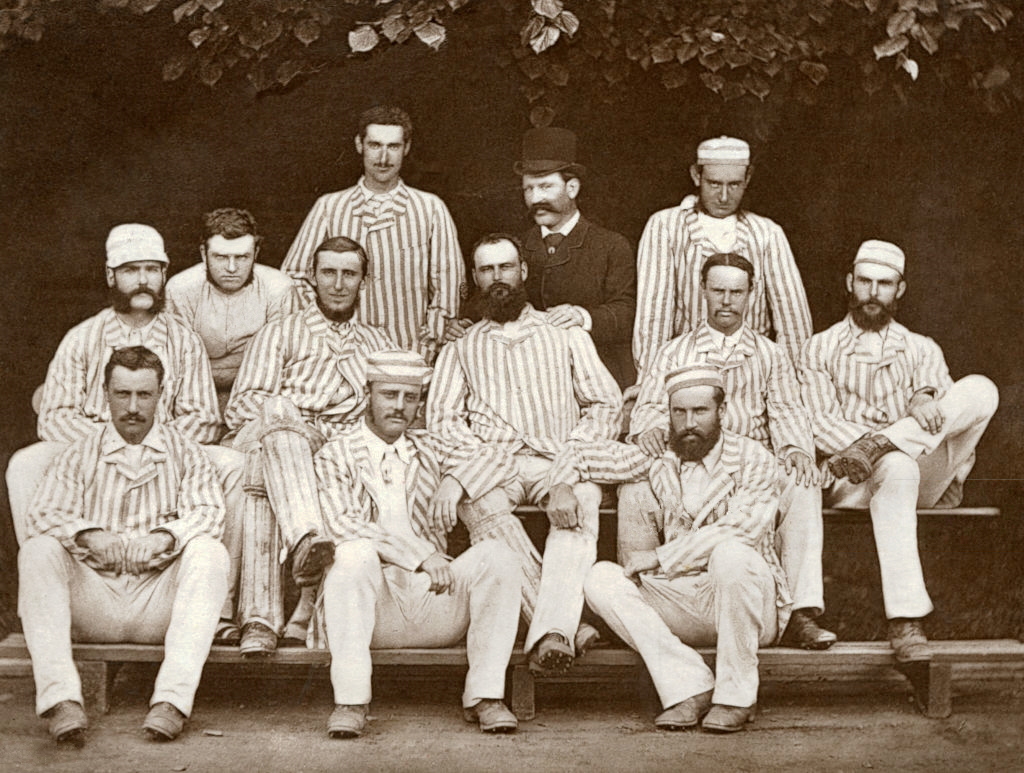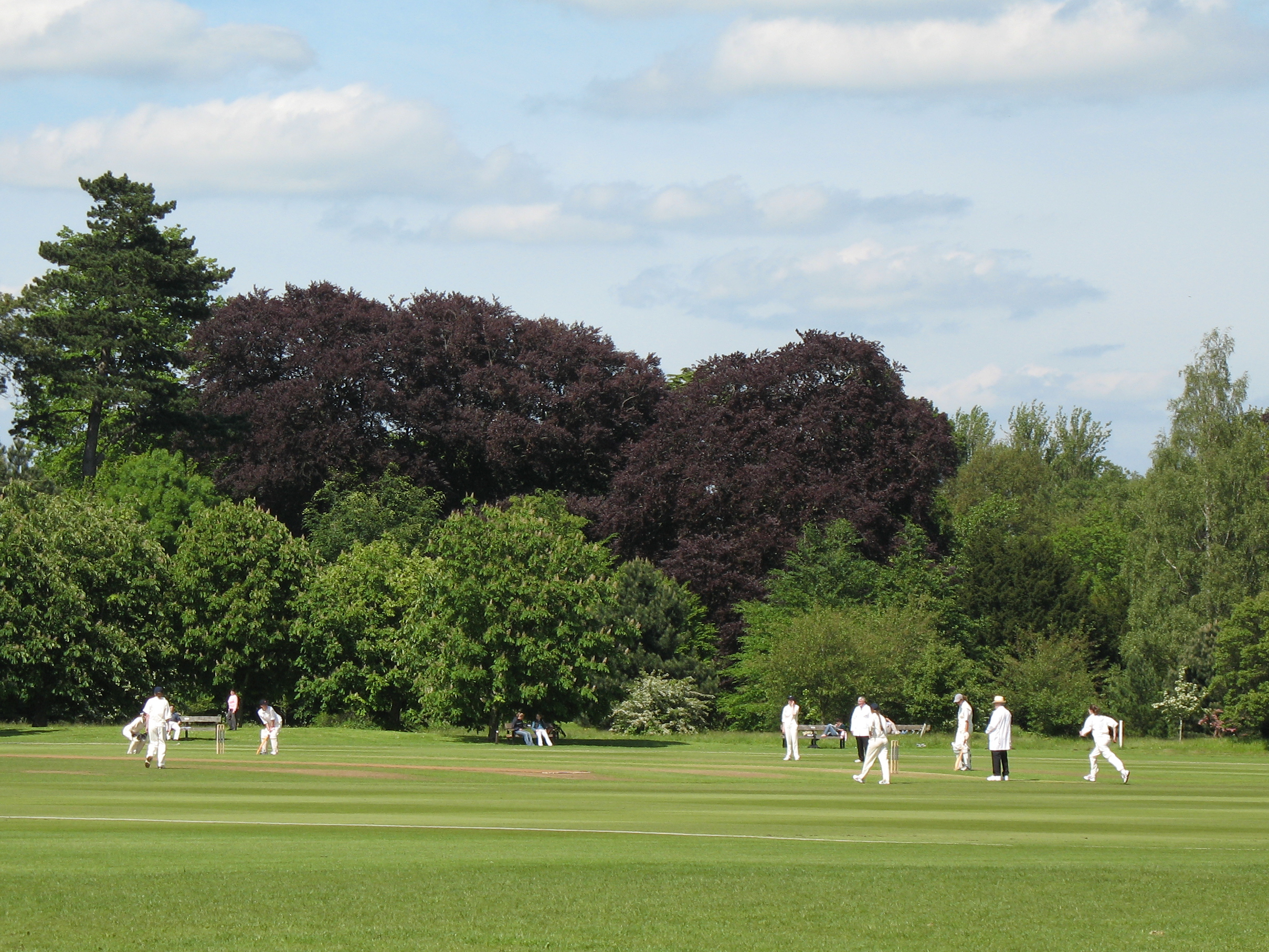|
Andrew Ducat
Andrew Ducat (15 February 1886 – 23 July 1942) was an England and Surrey cricketer and an England footballer, being one of an elite group to have represented their country in both sports. He died while batting at Lord's. Early life Ducat was born in Brixton, London, but grew up in Southend. The cricket writer David Foot said his surname was "pronounced 'Dewkitt' by the family, 'Duckett' on the football terraces". In the First World War, he served in the Royal Garrison Artillery, from 1915, and was promoted to Company Quartermaster Sergeant in 1916 until being discharged due to 'disability' in 1919. Player Profile, England Football Online, retrieved 25 March 2022. Cricket career Ducat joined the ground staff at The Ov ...[...More Info...] [...Related Items...] OR: [Wikipedia] [Google] [Baidu] |
David Foot (journalist)
David Foot (24 April 1929 – 25 May 2021) was a British journalist and historian who wrote extensively on English cricket and the West Country. Foot was born in the Somerset village of East Coker and spent most of his life in Somerset and Gloucestershire. He began his journalistic career with the ''Western Gazette'' in Yeovil before moving on to the '' Bristol Evening World''. From 1962 onwards he worked largely as a freelance. In the national press he contributed primarily to ''The Guardian'' from 1971 to 2011, writing chiefly on Somerset and Gloucestershire cricket, together with some football reports and theatre reviews. He also wrote a weekly column for the ''Western Daily Press'' for about 20 years. According to Scyld Berry, he was one of the last regional writers. It was "not only the quality of his work, but the speed" with which he wrote that was remarkable.Scyld Berry, "'Footy' cast a light on secret torment of a cricketer's life", Daily Telegraph sport section, page 2 ... [...More Info...] [...Related Items...] OR: [Wikipedia] [Google] [Baidu] |
Company Quartermaster Sergeant
Company quartermaster sergeant is a military rank or appointment. Canada A company quartermaster sergeant (CQMS) in the Canadian Forces is the non-commissioned officer in a company who is in charge of supplies. The CQMS also serves as the deputy to the company sergeant major and is the second most senior NCO in the company. This appointment is held by a warrant officer. Historically, before the Unification of the three services, the rank of staff sergeant was generally reserved for CQMS appointees in the former Canadian Army. Squadron quartermaster sergeant is the equivalent in the Royal Canadian Armoured Corps, Canadian Military Engineers, and in Communications Command. Battery quartermaster sergeant is the equivalent in the Royal Canadian Artillery. Ireland The rank of company quartermaster sergeant (CQMS) (''ceathrúsháirsint complacht'' in Irish) is also used in the Irish Army. It is an actual rank and is subordinate to the company sergeant (equivalent to a company ser ... [...More Info...] [...Related Items...] OR: [Wikipedia] [Google] [Baidu] |
Arsenal F
An arsenal is a place where weapon, arms and ammunition are made, maintenance, repair, and operations, maintained and repaired, stored, or issued, in any combination, whether Private property, privately or state-owned, publicly owned. Arsenal and armoury (British English) or armory (American English) are mostly regarded as synonyms, although subtle differences in usage exist. A sub-armory is a place of temporary storage or carrying of weapons and ammunition, such as any temporary post or patrol vehicle that is only operational in certain times of the day. Etymology The term in English entered the language in the 16th century as a loanword from french: arsenal, itself deriving from the it, arsenale, which in turn is thought to be a corruption of ar, دار الصناعة, , meaning "manufacturing shop". Types A lower-class arsenal, which can furnish the materiel and equipment of a small army, may contain a laboratory, gun and carriage factories, small-arms ammunition, sm ... [...More Info...] [...Related Items...] OR: [Wikipedia] [Google] [Baidu] |
Right Half
A midfielder is an outfield position in association football. Midfielders may play an exclusively defensive role, breaking up attacks, and are in that case known as defensive midfielders. As central midfielders often go across boundaries, with mobility and passing ability, they are often referred to as deep-lying midfielders, play-makers, box-to-box midfielders, or holding midfielders. There are also attacking midfielders with limited defensive assignments. The size of midfield units on a team and their assigned roles depend on what formation is used; the unit of these players on the pitch is commonly referred to as the midfield. Its name derives from the fact that midfield units typically make up the in-between units to the defensive units and forward units of a formation. Managers frequently assign one or more midfielders to disrupt the opposing team's attacks, while others may be tasked with creating goals, or have equal responsibilities between attack and defence. ... [...More Info...] [...Related Items...] OR: [Wikipedia] [Google] [Baidu] |
Centre Forward
Forwards (also known as attackers) are outfield positions in an association football team who play the furthest up the pitch and are therefore most responsible for scoring goals as well as assisting them. As with any attacking player, the role of the forward relies heavily on being able to create space for attack. Attacking positions generally favour irrational players who ask questions to the defensive side of the opponent in order to create scoring chances, where they benefit from a lack of predictability in attacking play. Team formations normally include one to three forwards. For example, the common 4–2–3–1 includes one forward. Less conventional formations may include more than three forwards, or none. Striker The normal role of a striker is to score the majority of goals on behalf of the team. If they are tall and physical players, with good heading ability, the player may also be used to get onto the end of crosses, win long balls, or receive passes and retain ... [...More Info...] [...Related Items...] OR: [Wikipedia] [Google] [Baidu] |
Hit Wicket
Hit wicket is a method of dismissal in the sport of cricket. This method of dismissal is governed by Law 35 of the Laws of Cricket. The striker is out "hit wicket" if, after the bowler has entered his delivery stride and while the ball is in play, his wicket is put down by his bat or his person. The striker may do this whilst preparing to receive or receiving a delivery or in setting off for his first run after playing the delivery. In simple language, if the striking batsman knocks the bails off the stumps or uproots the stumps, while attempting to hit the ball or take off for a run, he is out hit wicket. This method is the sixth most common method of dismissal after caught, bowled, leg before wicket, run out and stumped. It is significantly rarer than any of these, which constitute the five conventional methods, but still much more common than the other four (timed out, obstructing the field, retired out and hit the ball twice), which are extremely rare. Although a bowler is ... [...More Info...] [...Related Items...] OR: [Wikipedia] [Google] [Baidu] |
Ted McDonald
Edgar Arthur "Ted" McDonald (6 January 1891 – 22 July 1937) was a cricketer who played for Tasmania, Victoria, Lancashire and Australia, as well as being an Australian rules footballer who played with Launceston Football Club, Essendon Football Club, and Fitzroy Football Club. Cricket career A very fast bowler with the ability to cause problems even on docile pitches, Ted McDonald was the unexpected bowling sensation of the 1921 Australian tour to England. He and Jack Gregory caused something approaching panic among the England batsmen: John Evans' knees were allegedly knocking together when he went out to bat, and Andy Ducat was bowled when part of his bat, broken by McDonald's pace, hit the wicket. Where Gregory was able to swing the ball both ways, McDonald imparted vicious movement off the wicket. Like later fast bowling pairs, they were devastating in combination, taking 46 wickets in the series. McDonald played a few matches for Victoria before the First World War, b ... [...More Info...] [...Related Items...] OR: [Wikipedia] [Google] [Baidu] |
Headingley Stadium
Headingley Stadium is a stadium complex in Headingley, Leeds, West Yorkshire, England, comprising two separate grounds; Headingley Cricket Ground and Headingley Rugby Stadium, linked by a two-sided stand housing common facilities. The grounds are the respective homes of Yorkshire County Cricket Club (CCC) and Leeds Rhinos rugby league club. Initially it was owned by the Leeds Cricket, Football and Athletic Company (Leeds Rhinos); however since 2006, the cricket ground has been owned by Yorkshire CCC with the rugby ground retained by Leeds CF&A. The two organisations jointly manage the complex. From 2006 until 2017, the stadium was officially known as the Headingley Carnegie Stadium as a result of sponsorship from Leeds Metropolitan University, whose sports faculty is known as the Carnegie School of Sport Exercise and Physical Education. Between 1 November 2017 and 3 November 2021, the stadium was known as the Emerald Headingley Stadium due to the purchase of the naming rights by ... [...More Info...] [...Related Items...] OR: [Wikipedia] [Google] [Baidu] |
Australian Cricket Team
The Australia men's national cricket team represents Australia in men's international cricket. As the joint oldest team in Test cricket history, playing in the first ever Test match in 1877, the team also plays One-Day International (ODI) and Twenty20 International (T20I) cricket, participating in both the first ODI, against England in the 1970–71 season and the first T20I, against New Zealand in the 2004–05 season, winning both games. The team draws its players from teams playing in the Australian domestic competitions – the Sheffield Shield, the Australian domestic limited-overs cricket tournament and the Big Bash League. The national team has played 845 Test matches, winning 401, losing 227, drawing 215 and tying 2. , Australia is ranked first in the ICC Test Championship on 128 rating points. Australia is the most successful team in Test cricket history, in terms of overall wins, win–loss ratio and wins percentage. Test rivalries include The Ashes (with England) ... [...More Info...] [...Related Items...] OR: [Wikipedia] [Google] [Baidu] |
Wisden Cricketers Of The Year
The ''Wisden'' Cricketers of the Year are cricketers selected for the honour by the annual publication ''Wisden Cricketers' Almanack'', based primarily on their "influence on the previous English season". The award began in 1889 with the naming of "Six Great Bowlers of the Year", and continued with the naming of "Nine Great Batsmen of the Year" in 1890 and "6 Great Wicket-Keepers" in 1891. Since 1897, with a few notable exceptions, the annual award has recognised five players of the year. No players were named in 1916 or 1917, as the First World War prevented any first-class cricket being played in England, while in 1918 and 1919 the recipients were five schoolboy cricketers. From 1941 to 1946, the Second World War caused the same issue and no players were named. Three players have been sole recipients: W. G. Grace (1896), Plum Warner (1921) and Jack Hobbs (1926). The latter two selections are the only exceptions to the rule that a player may receive the award only once. Hobb ... [...More Info...] [...Related Items...] OR: [Wikipedia] [Google] [Baidu] |
Oxford University Cricket Club
Oxford University Cricket Club (OUCC), which represents the University of Oxford, has always held first-class status since 1827 when it made its debut in the inaugural University Match between OUCC and Cambridge University Cricket Club (CUCC). It was classified as a List A team in 1973 only. Home fixtures are played at the University Parks slightly northeast of Oxford city centre. History The earliest reference to cricket at Oxford is in 1673. OUCC made its known debut in the inaugural University Match between Oxford and Cambridge played in 1827. In terms of extant clubs being involved, this is the oldest major fixture in the world: i.e., although some inter-county fixtures are much older, none of the current county clubs were founded before 1839 (the oldest known current fixture is Kent ''versus'' Surrey). The Magdalen Ground was used for the University Cricket Club's first match in 1829, and remain in regular use until 1880. Bullingdon Green was used for two matches in 18 ... [...More Info...] [...Related Items...] OR: [Wikipedia] [Google] [Baidu] |
Ernie Hayes
Ernest George Hayes (6 November 1876 – 2 December 1953) was an English first-class cricketer who played for Surrey, Leicestershire and England. Ernie Hayes was a right-handed batsman, usually batting at No 3 and strong at driving and pulling, a leg-break bowler and a fine slip fielder. He was a regular in the Surrey side for 15 years up to the First World War, scoring 1,000 runs and more in every season from 1899 to 1914. His best year was 1906 when he scored 2,309 runs at an average of more than 45 runs an innings, and he was named as a Wisden Cricketer of the Year in 1907. His highest score, 276, was made against Hampshire in 1909 at The Oval, when he shared a second wicket partnership of 371 with Jack Hobbs that remains a Surrey record. Hayes' bowling was intermittently useful: in 1905, he took 76 wickets, and in 1912 there were 60, but in other seasons he took very few and was expensive. As a slip fielder, he took more than 600 catches in all matches. Hayes' Test mat ... [...More Info...] [...Related Items...] OR: [Wikipedia] [Google] [Baidu] |






